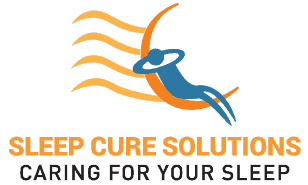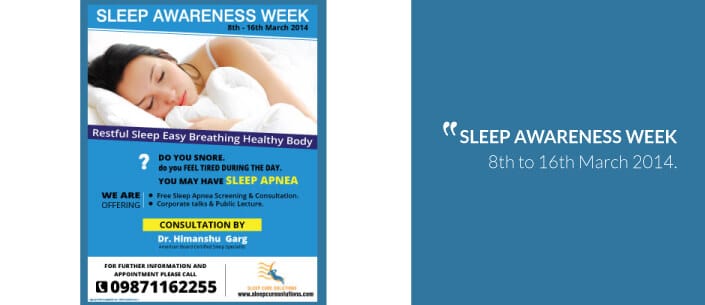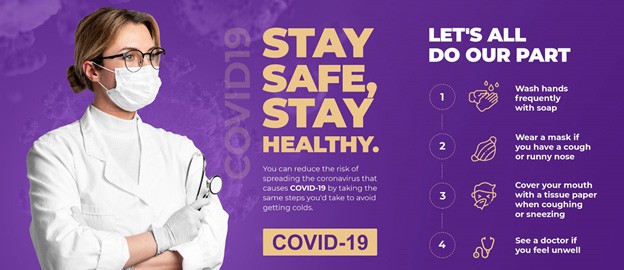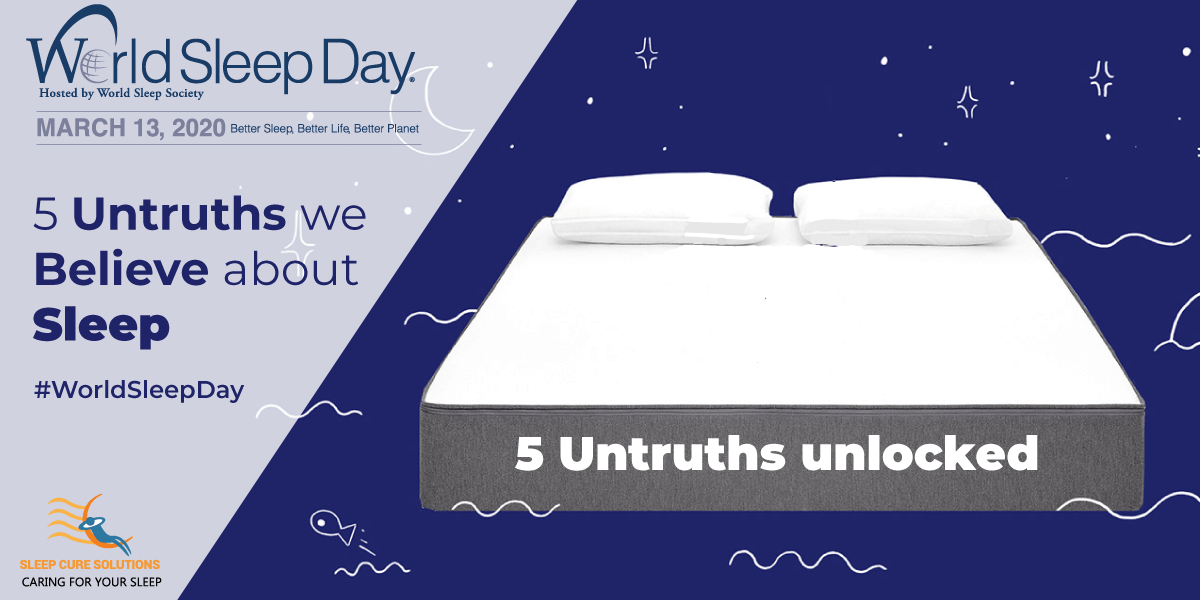World Sleep Day – How It Began
World Sleep Day (WSD) has grown steadily since its inception. The first WSD was held on March 14th 2008, under the slogan ‘Sleep well, live fully awake’. The 2009 WSD operated under the slogan “Drive alert, arrive safe” and had participants from 13 major markets, including 49 separate articles, mentioning “World Sleep Day”. 2010’s WSD slogan was “Sleep well, stay healthy” and experienced continued growth of international coverage. The 2011 WSD slogan was “Sleep well, grow healthy”—with emphasis on promoting quality sleeps for all ages. The 2012 World Sleep Day slogan was “Breathe easily, sleep well” held on March 16, 2012. The 2013 slogan was “good sleep, healthy aging” held on March 13, 2013. For 2014 the slogan is “restful sleep, easy breathing, healthy body” and will be held on March 14, 2014.
http://epaper.jagran.com/
WSD is an annual event intended to be a celebration of sleep and a call to action on important issues related to sleep. It is organized by the World Sleep Day Committee of the World Association of Sleep Medicine (WASM), and aims to lessen the burden of sleep problems on society through better prevention and management of sleep disorders. The world sleep day is on the Friday before the March equinoxes, and therefore, the date changes each year. The following are future World Sleep Day dates: 2015 is March 20, 2015; and 2016 is March 18, 2016.
WSD is co-chaired by committee members Antonio Culebras, MD, professor of neurology at SUNY, Upstate Medical University, Syracuse, New York; and Liborio Parrino, MD, assistant professor of neurology at Parma University, Italy; with support from WASM’s Executive Director Allan O’Bryan and the Executive Committee.
WSD events take place primarily online at www.worldsleepday.org, featuring educational and historical videos, education materials, and public service announcements. 50 national delegations assist with the local organization of these events.
WASM has issued the following declaration related to World Sleep Day:
World Sleep Day Declaration:
- Whereas, sleepiness and sleeplessness constitute a global epidemic that threatens health and quality of life,
- Whereas, much can be done to prevent and treat sleepiness and sleeplessness,
- Whereas, professional and public awareness are the firsts steps to action,
- We hereby DECLARE that the disorders of sleep are preventable and treatable medical conditions in every country of the world.
Slogan: Restful Sleep, Easy Breathing, Healthy Body
The objective of the 2014 slogan is to raise awareness of factors that are modifiable that can improve the quality of sleep and reduce the burden of fatigue and daytime somnolence. Interested persons should consult the ‘10 Commandments of Healthy Sleep’ for adults and children that have been posted on the World Sleep Day website. (www.worldsleepday.org)
RESTFUL SLEEP is one of the pillars of health. Three key elements of good quality sleep are:
- Duration: The length of sleep should be sufficient for the sleeper to be rested and alert the following day
- Continuity: Sleep periods should be seamless without fragmentation
- Depth: Sleep should be deep enough to be restorative
Failure to obtain quality sleep may lead to poor alertness, lack of attention, reduced concentration, decreased work and academic productivity, and even motor vehicle accidents.
Easy Breathing during sleep is a treasured commodity. Sleep-related respiratory disturbances, or sleep apnea, can lead to numerous health problems, such as hypertension, heart disease, stroke and diabetes. When breathing in sleep is an effort, quality sleep is reduced. There are modifiable risk factors that can build up to disrupt easy breathing in sleep. People who are obese may have accumulation of fat in the upper airway that along with a thick, large tongue disrupt the easy flow of air. A large abdomen interferes with the pumping action of the diaphragm. Obesity which has become epidemic in developing countries can be controlled and when doing so, sleep apnea is prevented.
Children with large inflamed tonsils may have obstruction of the upper airway and significant sleep apnea. Sleep apnea in children may delay physical and mental growth. Removing the tonsils can be curative.
Some individuals take medicines that reduce the activity of the respiratory centers and aggravate sleep apnea. Among such medicines are the sedatives and ironically the sleeping pills. Codeine-containing pain killers may also reduce the force of the respiratory effort in sleep and worsen sleep apnea.
Healthy Body is the premise that leads to a restful sleep. Sick individuals do not sleep well. Alleviating disease and avoiding unhealthful habits contribute to improve the quality of sleep.
General Messages
- World Sleep Day is an annual event to raise awareness of sleep disorders and the burden that they place on society. World Sleep Day 2014 will be held on March 14, 2014.
- Most sleep disorders are preventable or treatable, yet less than one-third of sufferers seek professional help.
- Sleep problems constitute a global epidemic that threatens health and quality of life for up to 45% of the world’s population.
- Better understanding of sleep conditions and more research into the area will help reduce the burden of sleep disorders on society.
Talking Points And Key Messages
Primary:
- Research shows that we spend up to one-third of our lives sleeping. Sleep is a basic human need, much like eating and drinking, and is crucial to our overall health and well-being.
- Sleep, like exercise and nutrition, is essential for metabolic regulation and balanced growth in children. There is evidence for a link between sleep duration and childhood obesity. The findings are more apparent in girls. Sleep duration is the effect of day-to-day variability of sleep-wake timing on weight regulation. 19,20
- Breathing regularly during sleep is critical to maintain well-being and health. Persistent interruption of the breathing function during sleep is called sleep apnea. This is a pervasive and common disorder that affects 4% of men and 2% of women.22
- Sleep apnea causes daytime sleepiness and fatigue, and may lead to conditions such as hypertension, ischemic heart disease, stroke, and diabetes.
- Lack of sleep or poor quality sleep is known to have a significant negative impact on our health in the long and short term. Next day effects of poor quality sleep include a negative impact on our attention span, memory recall and learning.5 Longer term effects are being studied, but poor quality sleep or sleep deprivation has been associated with significant health problems, such as obesity, diabetes, weakened immune systems and even some cancers.6,7,8
- Lack of sleep is related to many psychological conditions such as depression, anxiety and psychosis.9,10
- Lack of sleep or poor quality sleep also leaves us more vulnerable to accidents. People who suffer some insomnia are seven times more likely to become involved in an accident causing death or serious injury than good sleepers.
- Quality sleep is crucial to ensure good health and quality of life.
Importance of good-quality, restorative sleep
- Good quality and restorative sleep is essential for day-to-day functioning. Studies suggest that sleep quality rather than quantity has a greater impact on quality of life and daytime functioning.
- Healthy sleep in children will improve the child’s overall wellness. WASM has created the 10 commandments of Healthy Sleep for Children, available at www.worldsleepday.org.
- Poor quality sleep has a greater negative impact on health, well-being and satisfaction with life than the quantity of sleep a person gets.
- Quality sleep is responsible for alertness, improved functioning the following day and better quality of life.
Consequences of sleep disorders
- Sleep disorders cause significant individual and societal burden and create a serious public health problem.
- Obstructive sleep apnea significantly impacts health and well-being.
- Studies have shown that people with insomnia suffer from more symptoms of anxiety and depression than people without insomnia.
- Insomnia has a negative impact in all areas of a sufferer’s life.
- Insomnia can affect work performance, with a change in character and a drop in the quality of work. If the disorder remains untreated, this may even lead to reduced job prospects and loss of employment.
- Directly or indirectly, disrupted sleep can have a negative effect on family life and relationships by affecting a person’s mood and the way in which they are able to perform daily activities and interact socially.
Extent of the epidemic
- 35% of people do not feel they get enough sleep, impacting both their physical and mental health.
- Insomnia affects between 30-45% of the adult population.
- Obstructive sleep apnea (OSA) affects approximately 4% of male adults and 2% of the female population. 21 If not properly managed, OSA can have a significant impact on a person’s health and well-being.
- Primary insomnia (insomnia with no underlying condition) affects 1-10% of the general population, increasing up to 25% in the elderly.
- Restless Legs Syndrome is a common disorder and occurs in between 3-10% of the population, although the number of people affected and the severity of the condition differs between countries.
- People who have OSA stop breathing repeatedly during sleep. OSA is caused by a blocking of the upper airway. The collapse of the airway may be due to such factors as a large tongue, extra tissue or decreased muscle tone holding the airway open.
- Each breathing stop can last from 10 seconds to more than a minute and has a drop in oxygen associated with each event. The events may occur 5 to 30 times or more each hour. This puts a strain on the heart and can lead to a number of serious health conditions (U.S. Dept. of Health & Human Services, NIH, 2009).
- Known consequences: some statistics
- A US study has estimated:
- The annual costs of insomnia to be between $92.5 billion and $107.5 billion.
- 71,000 people receive injuries every year due to sleep-related accidents.
- 1,550 people die because of sleep-related accidents.
- 46% of individuals with frequent sleep disturbances report missing work or events, or making errors at work, compared to 15% of healthy sleepers.
Sleep Breathing Problems
Obstructive sleep apnea is very prevalent, but under recognized. The Wisconsin Sleep Cohort Study estimated a prevalence of 24% among men and 9% among women in that state in the United States. In northern India, the prevalence of obstructive sleep apnea and obstructive sleep apnea syndrome is 13.7%. OSA is an independent risk factor for hypertension and other cardiovascular ailments. In children, sleep apnea may be the underlying cause of neuropsychological disturbances. Pediatric sleep apnea is typically associated with adenotonsillar hypertrophy.
Both adults and children should be formally investigated in sleep centers if sleep apnea is suspected, because both adult and pediatric sleep apnea is treatable and correctable; a correct and precise diagnosis is always required.
Sleep apnea is diagnosed with polysomnography in the sleep laboratory. Treatment with non-invasive positive airway (continuous positive airway pressure, or CPAP) ventilation is generally successful. For mild forms of sleep apnea, the application of oral devices can be beneficial. Surgery to remove excessive tissues in the oropharynx may be considered for individuals who cannot tolerate non-invasive equipment or who have obvious obstruction to airflow in the oropharynx by redundant tissue growth or large tonsils. There is proof that successful correction of sleep apnea with non-invasive positive airway pressure ventilation lowers mean blood pressure and may reduce the risk of myocardial infarction and stroke. Excessive daytime somnolence generally improves with successful treatment of sleep apnea.
What You Can Do About It
- Join in on the World Sleep Day 2014 celebrations.
- Obtain more information at www.worldsleepday.org.
- Help put more emphasis on the diagnosis and treatment of sleep disorders in general and of sleep breathing problems in particular.
- Spread the message that more research is needed to completely understand sleep and to understand the causes of sleep disorders.
- Be cognizant that most sleep problems can be managed by changing behaviours around sleep, medical therapy or cognitive behavioural therapy.
- Be aware that patients suffering from sleep complaints, or who suffer from excessive daytime sleepiness, should see a physician and, if needed, obtain a consultation in a sleep center.
Principles Of Good Sleep
Violation of the 10 Commandments of Sleep Hygiene can cause poor quality of nocturnal sleep, short duration of sleep, fragmentation of sleep and serious sleep deprivation in adults.
10 Commandments Of Sleep Hygiene For Adults
- Fix a bedtime and an awakening time.
- If you are in the habit of taking siestas, do not exceed 45 minutes of daytime sleep.
- Avoid excessive alcohol ingestion 4 hours before bedtime and do not smoke.
- Avoid caffeine 6 hours before bedtime. This includes coffee, tea and many sodas, as well as chocolate.
- Avoid heavy, spicy, or sugary foods 4 hours before bedtime. A light snack before bed is acceptable.
- Exercise regularly, but not right before bed.
- Use comfortable bedding.
- Find a comfortable temperature setting for sleeping and keep the room well ventilated.
- Block out all distracting noise and eliminate as much light as possible.
- Reserve the bed for sleep and sex. Don’t use the bed as an office, workroom or recreation room.
10 Commandments Of Sleep Hygience For Children [Ages Birth To 12 Years]
- Go to bed at the same time every night, preferably before 9:00.
- Have an age-appropriate nap schedule.
- Establish a consistent bedtime routine.
- Make your child’s bedroom sleep conducive – cool, dark, and quiet.
- Encourage your child to fall asleep independently.
- Avoid bright light at bedtime and during the night, and increase light exposure in the morning.
- Avoid heavy meals and vigorous exercise close to bedtime.
- Keep all electronics, including televisions, computers, and cell phones, out of the bedroom and limit the use of electronics before bedtime.
- Avoid caffeine, including many sodas, coffee, and teas (as well as iced tea).
- Keep a regular daily schedule, including consistent mealtimes.
World Sleep Day 2014 has partnered with sleep societies, commercial enterprises and individuals around the world to raise awareness about sleep-breathing problems. Visit our website www.worldsleepday.org for information on 2014 activities.
Bibliography
- Department for Transport, Sleep related vehicle accidents. http://www.dft.gov.uk/pgr/roadsafety/research/rsrr/theme3/sleeprelatedvehicleaccidentsno22?page=2 . Last accessed 18/12/08
- Ohayon MM, Zulley J. Correlates of global sleep dissatisfaction in the German population. Sleep 2001; 24: 780-787
- Wade AG, Zisapel N, Lemoine P. Prolonged-release melatonin for the treatment of insomnia: targeting quality of sleep and morning alertness. Ageing Health 2008; 4 (1): 11-12
- Léger D et al. Economic consequences of insomnia. Sleep Res 26, 412
- Ohayon MM et al. Correlates of global sleep satisfaction in the psychiatric diagnosis catagories. Psychiatry Clin Neurosci 2002; 56: 239-240
- Taheri S, Lin L, Austin D et al. Short sleep duration is associated with elevated ghrelin, reduced leptin and increased body mass index. PLoS Med 2004; 1(3): e62
- Gottlieb DJ, Punjabi NM, Newman AB et al. Association of sleep time with diabetes mellitus and impaired glucose tolerance. Arch Intern Med 2005; 165(8): 863-7
- Gumustekin K, Seven B, Karabulut N et al. Effects of sleep deprivation, nicotine and selenium on wound healing in rats. Neurosci 2004; 114: 1433-1442
- Zammit GK, Weiner J, Damato N et al. Quality of life in people with insomnia. Sleep 1999; 22 Suppl 2: S379-85
- Beusterien KM, Rogers AE, Walslenben J et al. Health related quality of life effects of modafinil for treatment of narcolepsy. Sleep 1999; 22(6): 757-765
- Metlaine A et al. Socioeconomic impact of insomnia in working populations. Indust Health 2005; 43(1): 11-19
- Kandel ER, Schwartz JH, Jessell TM. Principles of neural science. The McGraw-Hill Companies Inc, 2000
- Pilcher JJ. Sleep quality versus sleep quantity: relationships between sleep and measures of health, well-being and sleepiness in college students. J Psychosom Res. 1997; 42(6): 583-96
- Royal Society for the Prevention of Accidents, RoSPA. Driver Fatigue and Road Accident: A literature review and position paper. February 2001
- Think! Tiredness can kill- advice for drivers. INF159 Driver and Vehicle Licensing Agency (DVLA)
- National Highway Traffic Safety Administration (NHTSA)
- www.nhtsa.dot.gov
- Reeder CE, Franklin M, Bramley TJ. Current landscape of insomnia in managed care. Am J Manage Care 2007; 13(Suppl 5): S112-6
- National Sleep Foundation
www.sleepfoundation.org
- Yu Y, Lu BS, Wang B, Wang H, Yang J, Li Z, Wang L, Liu X, Tang G, Xing H, Xu X, Zee PC, Wang X. Short sleep duration and adiposity in Chinese adolescents. Sleep. 2007 Dec 1;30(12):1688-97
- Gozal D. et al, 2011 Pediatrics. In press
- The ‘Philips Index for Health and Well-being: A global perspective’ – www.philips-thecenter.org/the-philips-global-index. Last accessed on 28 February 2011
- Young T, Palta M, Dempsey J, Skatrud J, Weber S, Badr S. The occurrence of sleep-disordered breathing among middle-aged adults. N Engl J Med 1993;328:1230-5.
- Sharma SK, Kumpawat S, Banga A, Goel A. Prevalence and risk factors of obstructive sleep apnea syndrome in a population of Delhi, India. Chest 2006;130:149-56.
- Nieto FJ, Young TB, Lind BK, et al. Association of sleep-disordered breathing, sleep apnea, and hypertension in a large community-based study: Sleep Heart Health Study. JAMA 2000;283:1829-36.
- Beebe DW. Neurobehavioral morbidity associated with disordered breathing during sleep in children: A comprehensive review. Sleep. 2006;29(9):1115-1134.
- Culebras A Sleep Disorders. In: Kris Heggenhougen and Stella Quah, editors International Encyclopedia of Public Health, Vol 6. San Diego: Academic Press; 2008. pp. 21-26.
LOGOS
Written consent from the World Association of Sleep Medicine must be given before WASM and World Sleep Day logos may be used.





